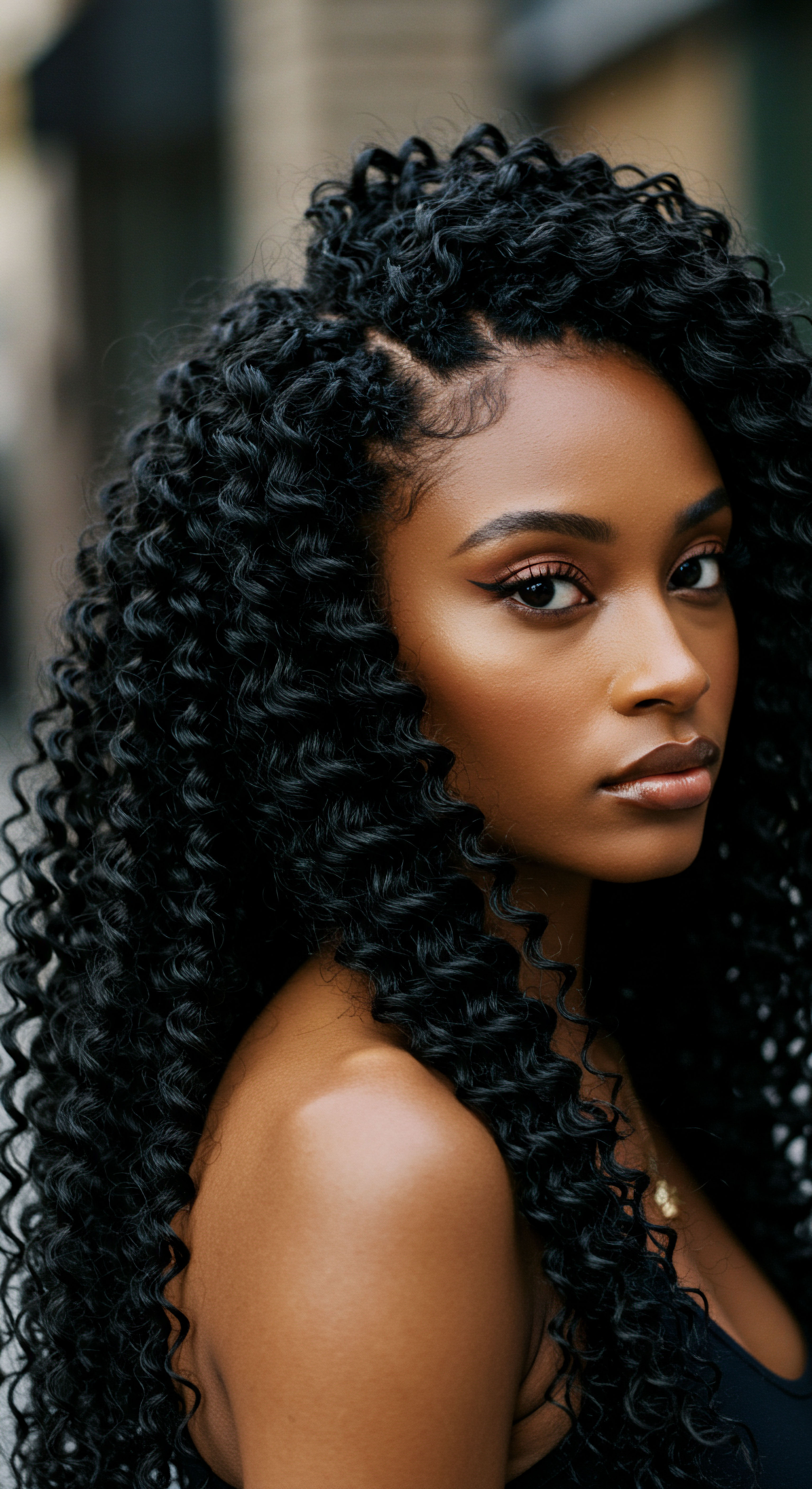
Roots
The whisper of the Nile, carried on the ancient breeze, often stirs a quiet wonder about the lives lived along its banks. Among the myriad details that paint a picture of existence in that distant time, hair holds a unique place. It is not merely a biological feature; it is a profound expression of identity, status, and connection to the cosmos.
When we gaze upon the depictions from ancient Egypt, or consider the carefully preserved artifacts, a question softly rises ❉ did the very textures of natural hair find a direct echo in the meticulously crafted wigs, or did artistry bend reality to a different ideal? This initial inquiry beckons us to consider the foundational aspects of hair itself, to understand its physical properties and how those properties might have interacted with the aspirations of a culture so dedicated to appearance and symbolism.

Hair’s Place in Ancient Society
For the ancient Egyptians, hair possessed a significance that extended beyond mere aesthetics. It was a signifier of gender, age, and social standing, carrying connotations of personal allure, spiritual connection, and even magical potency. From the earliest dynasties, the way hair was presented spoke volumes about an individual’s place within the societal structure.
Evidence from funerary contexts—preserved bodies, burial items, and the extensive visual records from elite tombs—provides a window into these practices. These artistic representations aimed to secure a successful rebirth and passage into the afterlife, a goal that intertwined with the meticulous grooming of both natural hair and its elaborate extensions.
Hair in ancient Egypt served as a powerful marker of identity, status, and spiritual connection.
The climate of ancient Egypt, with its intense sun and arid conditions, also played a practical role in shaping hair practices. Shaving the head was a common practice, particularly for hygiene and to combat lice, a persistent concern. Wigs, therefore, provided not only a stylistic choice but also a protective layer, shielding the scalp from the elements while allowing for a maintained, elegant appearance. This practical consideration often stood side-by-side with the desire for elaborate and impressive styles, indicating a blend of pragmatic needs and aesthetic aspirations.
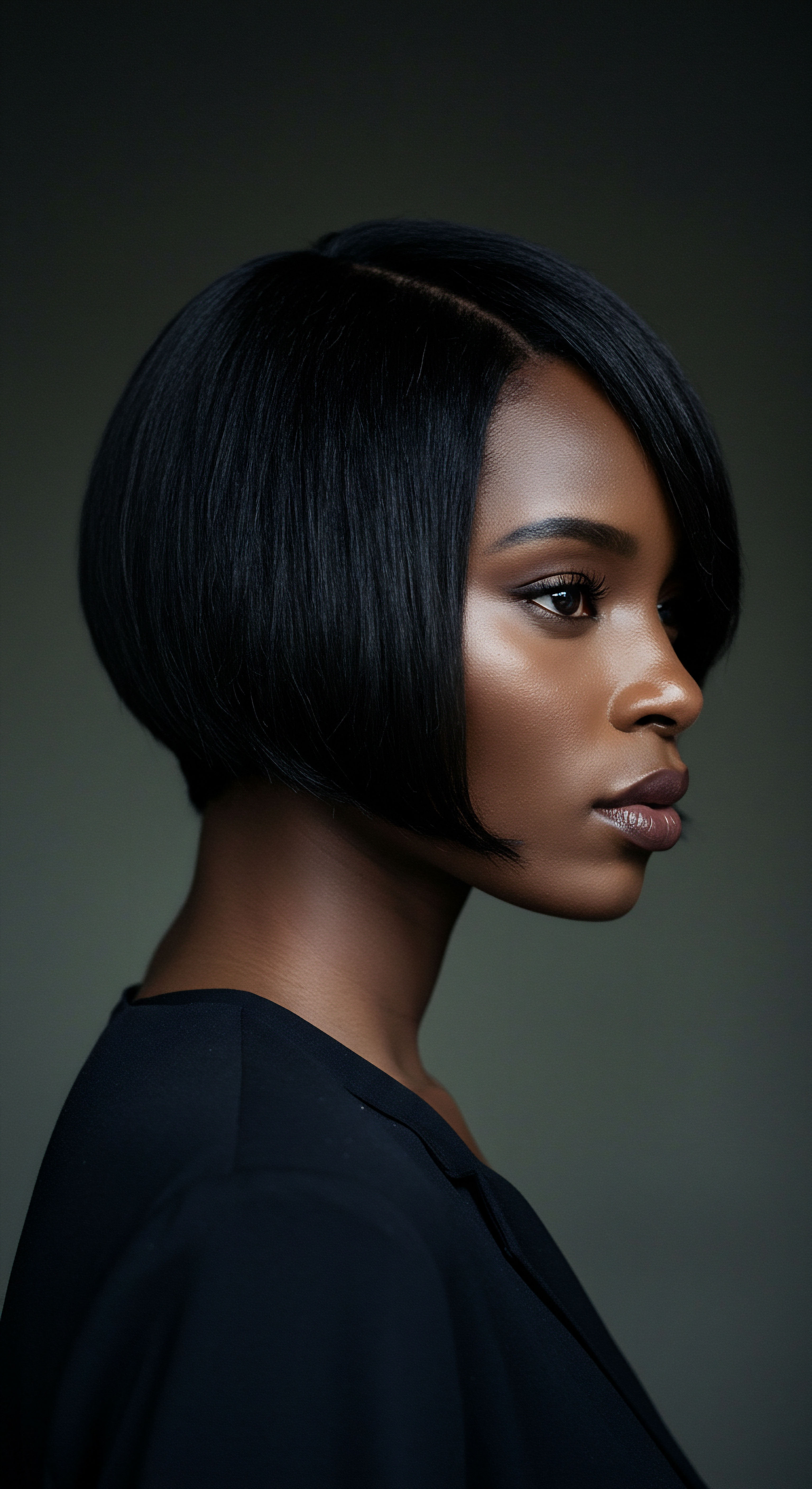
The Anatomy of Textured Hair
To truly appreciate the interaction between natural hair and wig construction, we must first consider the biological distinctions of hair texture. Hair, at its core, is a protein filament, primarily keratin, growing from follicles within the skin. The shape of this follicle largely determines the curl pattern of the hair shaft. A perfectly round follicle tends to produce straight hair, while an oval or elliptical follicle yields wavy, curly, or coily textures.
The flatter the oval, the tighter the curl. These structural differences affect how light reflects off the hair, its susceptibility to moisture changes, and its overall behavior.
- Follicle Shape ❉ A key determinant of curl pattern, with flatter follicles producing tighter coils.
- Cortical Cells ❉ The distribution of these cells within the hair shaft influences the curl’s uniformity and strength.
- Cuticle Layers ❉ The outermost protective scales, which lie flatter on straight hair and are more raised on textured hair, impacting moisture retention.
Ancient Egyptian populations were diverse, encompassing individuals with a range of hair textures, from straight to tightly coiled. While archaeological finds of mummified remains show this natural variation, the visual canon often depicted a more uniform, stylized appearance. This disparity prompts us to consider whether wig construction aimed to replicate this natural diversity or to standardize it according to prevailing beauty standards.
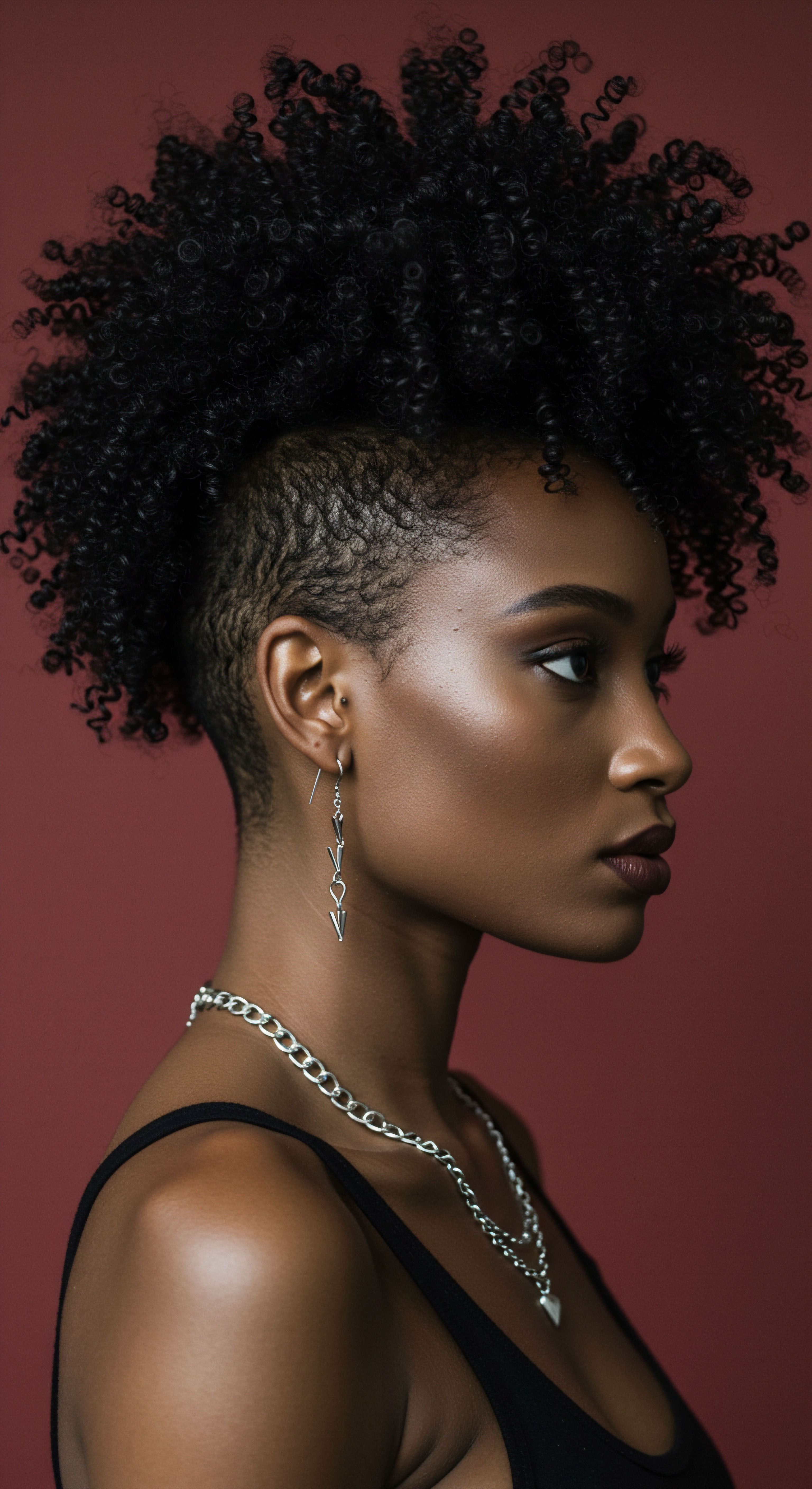
Unearthing Hair’s Past
Our understanding of ancient Egyptian hair practices stems from a combination of sources. Tomb paintings and sculptures provide a rich visual record, illustrating hairstyles and wig styles worn by the elite. These artistic representations, however, often present an idealized vision, rather than a strict documentary account of everyday appearance.
Complementing these visual sources are archaeological finds, including actual mummified hair and preserved wigs. Scientific analysis of these physical remains offers invaluable insights into the materials used, the construction techniques, and even the chemical treatments applied to hair.
Alfred Lucas’s seminal work, Ancient Egyptian Materials and Industries, provides a detailed account of the raw materials available and the processes employed in various crafts, including those related to hair and adornment. Such studies allow us to understand the practical constraints and possibilities that existed for ancient artisans. By examining these sources together, a more complete picture begins to form, allowing us to discern the interplay between natural hair characteristics and the crafted artistry of wigs.

Ritual
Stepping beyond the fundamental elements of hair, we enter the realm of daily practice and ceremonial display. How did the ancient Egyptians transform raw materials into the magnificent headpieces we see depicted? This section explores the techniques and tools that shaped ancient Egyptian wigs, moving from the foundational understanding of hair to its practical application in adornment. The creation of these wigs was a ritual in itself, a precise process that blended artistry with a deep understanding of materials, reflecting a desire for order, beauty, and often, symbolic representation.

The Art of Wig Making
Ancient Egyptian wigs were not simple coverings; they were elaborate constructions, often requiring significant skill and resources. The primary material used was human hair, a valuable commodity. This hair was often sourced from various individuals, and sometimes supplemented with plant fibers, such as palm fiber, or even animal hair, particularly for bulk or specific textures.
The hair was typically attached to a mesh or netting base, often made of plant material or linen. This base would then be fitted to the wearer’s head.
The strands of hair were attached in small bundles, often using beeswax and resin as adhesives to secure them and help maintain the desired style. This adhesive also gave the wigs a characteristic sheen. The process of attaching thousands of individual strands or small braids to a base was labor-intensive, speaking to the value placed on these items. Dr.
Joann Fletcher, a leading Egyptologist, has conducted extensive studies on ancient Egyptian wigs, highlighting the meticulous techniques involved in their construction. Her research underscores the level of craftsmanship that went into creating these pieces, which were far from rudimentary.
Ancient Egyptian wigs were meticulously crafted from human hair, sometimes augmented with plant fibers, and set with beeswax and resin.

Stylistic Preferences and Social Codes
Wig styles changed over the millennia, reflecting evolving aesthetic preferences and social codes. In the Old Kingdom, simpler, shorter bob-like styles were common. The Middle Kingdom saw the rise of more voluminous, tripartite wigs, often arranged in three sections.
By the New Kingdom, wigs reached their zenith of complexity, with elaborate layered styles, tightly curled sections, and intricate braids. These stylistic shifts were not arbitrary; they often corresponded with broader societal changes and the prevailing ideals of beauty and status.
| Period Old Kingdom |
| Dominant Styles Short bobs, simple rounded shapes |
| Typical Features Often compact, less elaborate, practical |
| Period Middle Kingdom |
| Dominant Styles Tripartite wigs, shoulder-length styles |
| Typical Features More volume, distinct sections, greater artistry |
| Period New Kingdom |
| Dominant Styles Long, layered, tightly curled or braided wigs |
| Typical Features Most elaborate, highly stylized, sign of wealth |
| Period Styles varied by period, reflecting changes in aesthetics and social status. |
The length and intricacy of a wig could signify the wearer’s social standing. Elite men and women wore the most elaborate and expensive wigs, distinguishing them from the general populace. While men often kept their natural hair short or shaved, they too adopted wigs for formal occasions, demonstrating wealth and adherence to prevailing fashion. Gay Robins’s work, Women in Ancient Egypt, provides context on how women’s roles and appearances, including their hairstyles, were depicted and understood within ancient Egyptian society.
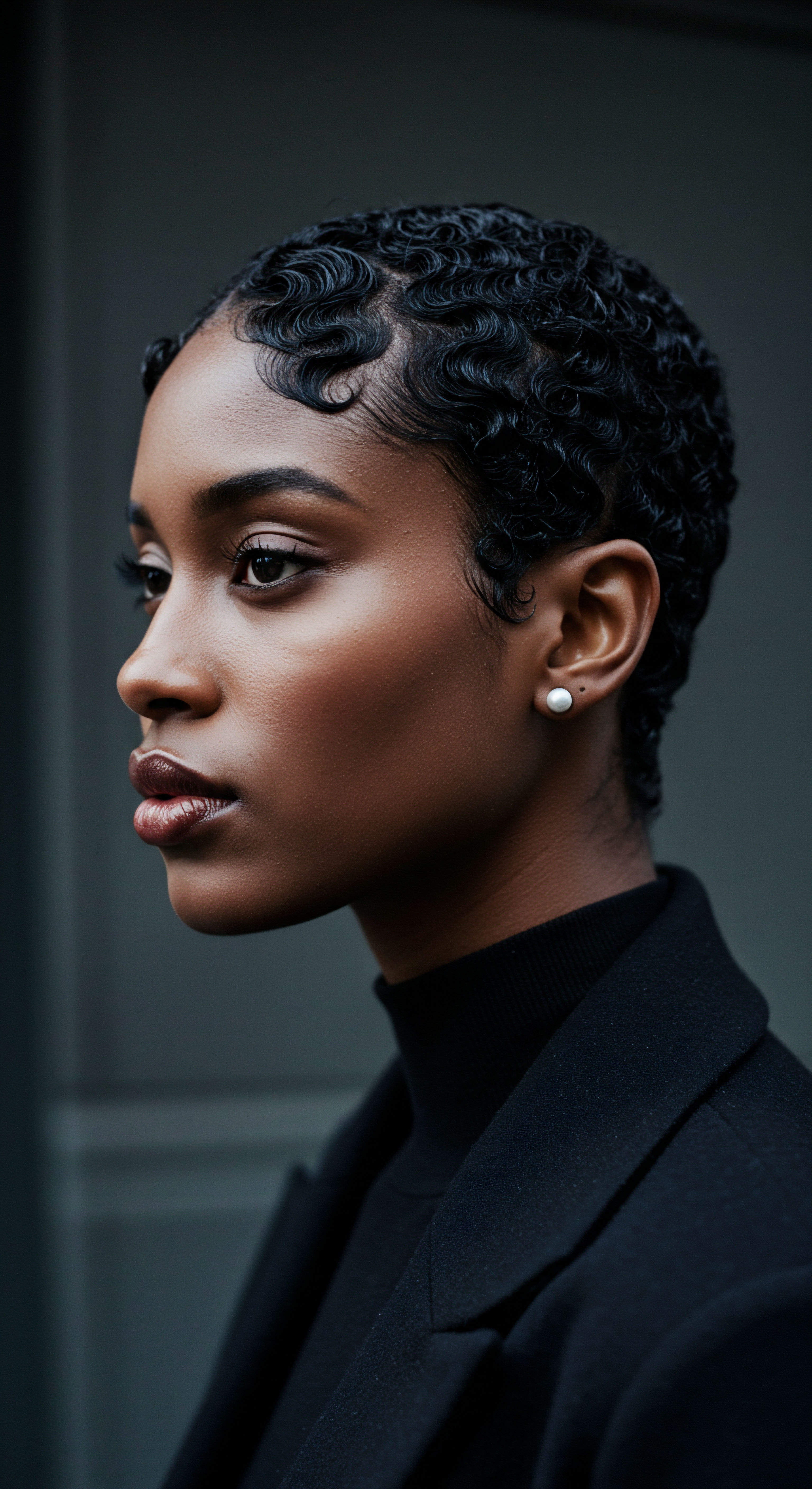
How Did Wig Construction Respond to Natural Hair?
The core question remains ❉ did wig construction techniques directly mirror or purposefully alter natural hair textures? While natural hair could be styled—braided, curled, or even temporarily straightened using fats and oils—the wigs allowed for a degree of uniformity and perfection that natural hair, with its inherent variations, might not consistently achieve.
Consider the common depiction of tightly crimped or spiraled wig sections. While some individuals certainly possessed naturally curly or coily hair, achieving such a consistent, uniform appearance across an entire wig, particularly one of significant volume, would necessitate specific construction methods that manipulated the hair. This suggests an aesthetic ideal that often transcended the direct replication of individual natural textures. The wig became a canvas upon which a desired, often idealized, hair form was created.
This manipulation involved several techniques:
- Sectioning and Braiding ❉ Hair was often divided into small sections and tightly braided or twisted. These braids could then be arranged to form the desired shape and volume of the wig.
- Crimping and Curling ❉ Techniques involving heat or tight wrapping around rods (perhaps wood or bone) were likely used to set consistent curls or crimps, giving the wigs their signature structured waves.
- Application of Adhesives ❉ Beeswax and plant resins were not just for attachment; they also served as styling agents, providing hold and a polished finish, effectively altering the natural movement and appearance of the hair strands.
The presence of lice, as noted by Joann Fletcher’s research on mummies, also supports the practice of shaving natural hair for hygiene, making wigs a practical and fashionable alternative. This practical aspect further suggests that wigs were not always intended to perfectly mimic natural hair but to serve a distinct, often idealized, purpose.
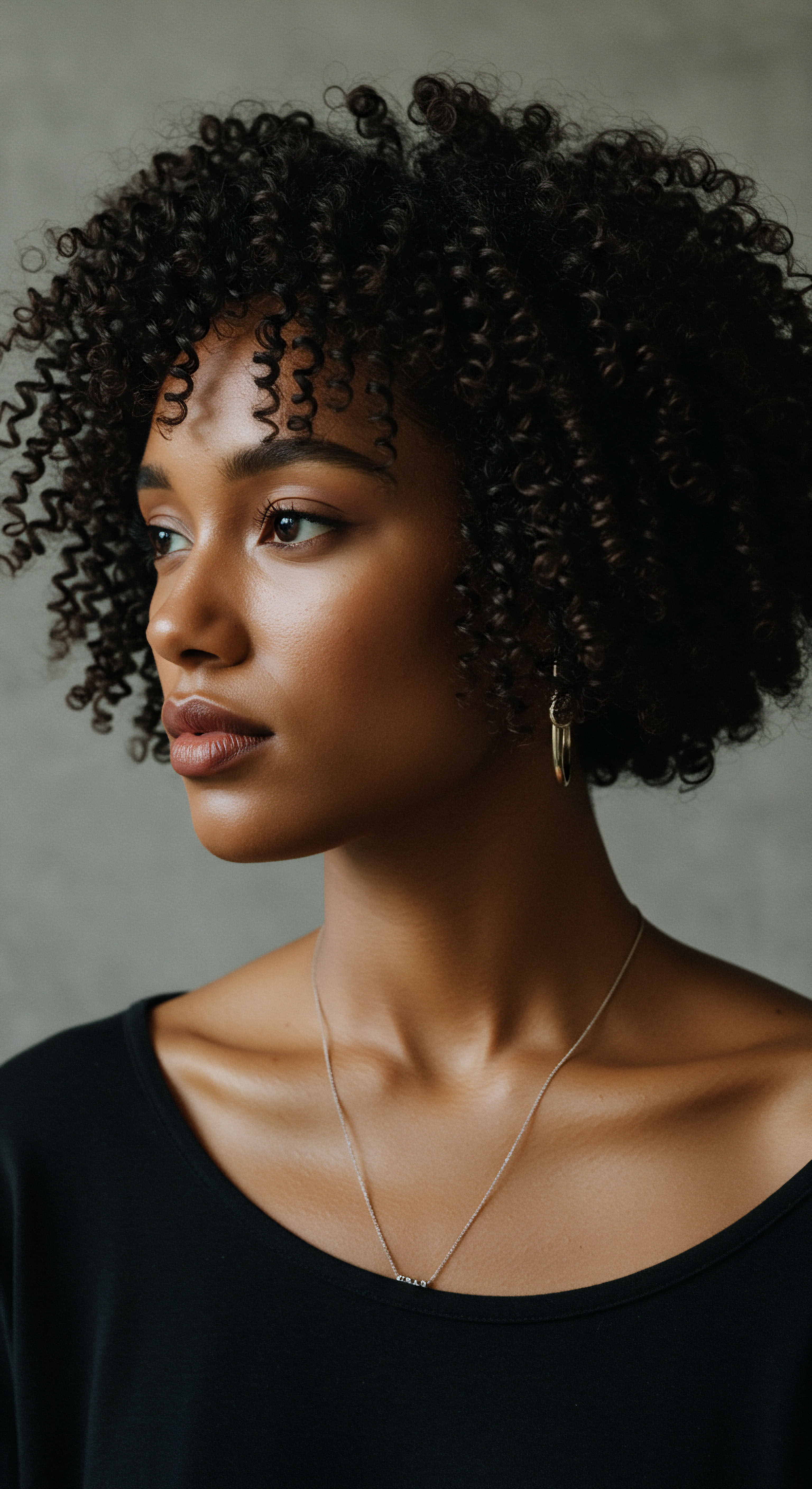
Relay
Having explored the foundations of ancient Egyptian hair practices and the mechanics of wig construction, we now move to a more sophisticated inquiry ❉ the precise interplay between natural hair textures and the aesthetic ideals that shaped wig artistry. This discussion requires us to move beyond surface observations, drawing upon scientific analysis of ancient remains and a deeper cultural understanding to discern whether wigs truly reflected or deliberately reshaped the appearance of hair. We seek to understand the underlying intentions and the complex relationship between the body’s natural state and its stylized presentation in a society so attuned to symbolism and permanence.

Were Wigs a Mirror or a Mask?
The question of whether ancient Egyptian wigs mirrored or masked natural hair textures leads us to a fascinating intersection of anthropology, archaeology, and cosmetic science. While tomb paintings and statues frequently present an idealized, almost uniform aesthetic of hair—smooth, tightly braided, or perfectly coiffed—the reality of natural hair within the diverse ancient Egyptian population would have encompassed a wide spectrum of textures. Individuals of various ethnic backgrounds resided in Egypt, meaning hair types would have ranged from straight to wavy, curly, and even tightly coiled.
Scientific investigations into mummified hair samples offer a window into this biological reality. Studies have revealed that ancient Egyptians, including those of high status, possessed a variety of natural hair textures. For example, analyses of hair shafts from mummies have indicated the presence of naturally wavy and curly hair, which contrasts with the often-depicted smooth, structured appearance of many wigs. This observation suggests that the primary aim of wig construction was not necessarily to replicate an individual’s specific natural texture, but rather to achieve a stylized, culturally preferred aesthetic.
Ancient Egyptian wig artistry aimed for an idealized aesthetic, often transforming natural hair textures rather than simply mirroring them.
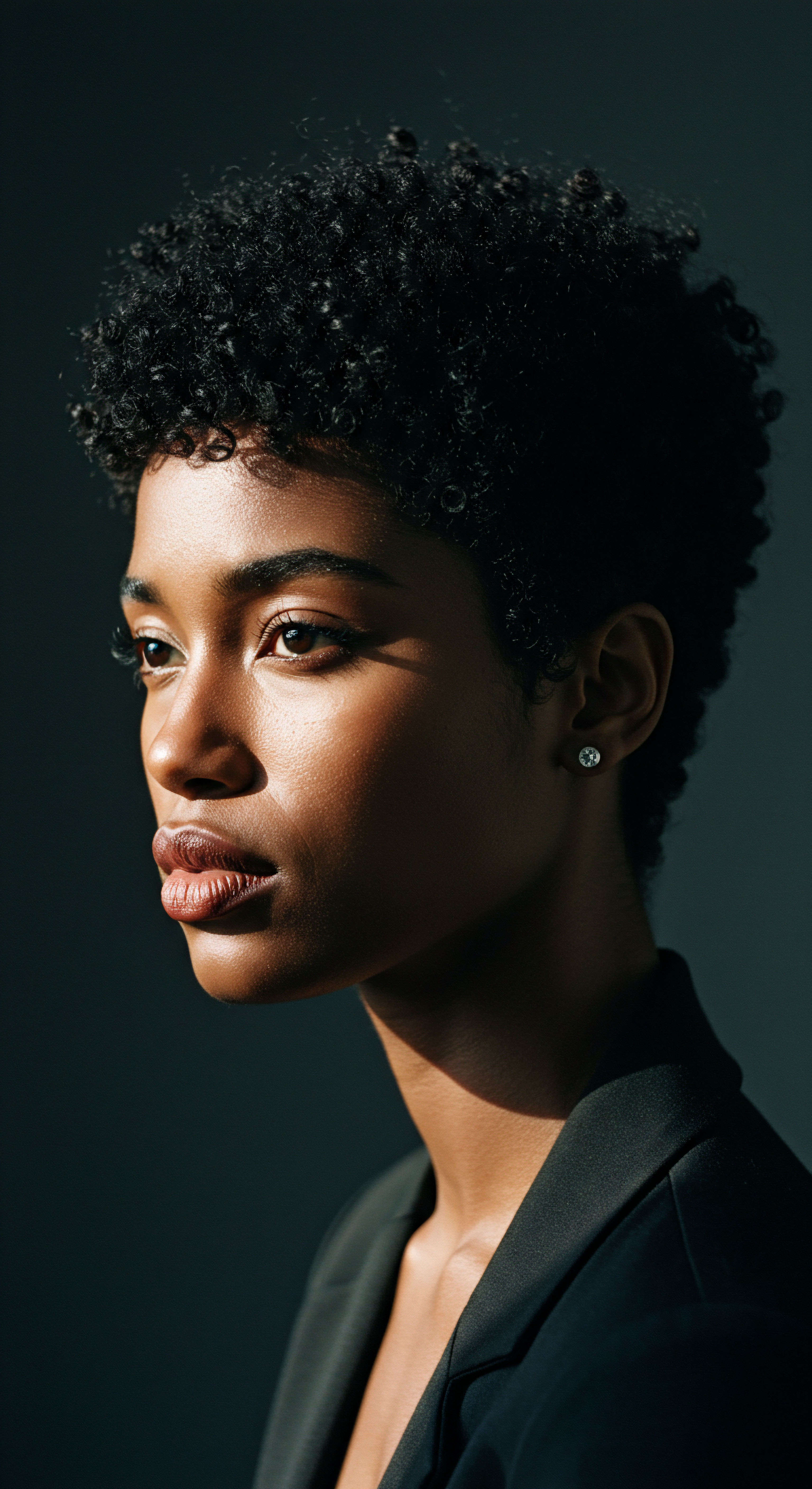
The Evidence of Manipulation
A significant body of evidence points towards the deliberate alteration of hair in wig construction. The very techniques employed by ancient Egyptian wig makers suggest a strong inclination towards manipulation rather than pure replication.
- Standardized Curls and Braids ❉ Many surviving wig fragments and artistic depictions show a remarkable consistency in curl patterns or braid size. Achieving such uniformity across a large headpiece, particularly one composed of numerous individual strands, speaks to the systematic application of styling techniques. This consistency would be difficult to attain with diverse natural hair textures without significant processing.
- Use of Resins and Beeswax ❉ The widespread application of beeswax and plant resins in wig making, as detailed by A. Lucas, served not only as an adhesive but also as a powerful styling agent. These substances would have effectively coated hair strands, allowing them to be molded into rigid, structured forms that held their shape over time, regardless of the hair’s inherent curl pattern. This acted as a kind of ancient hair gel or pomade, setting the hair into a desired form.
- Composite Materials ❉ The inclusion of non-human hair materials, such as plant fibers or animal hair, in wig construction further supports the idea of creating a specific aesthetic rather than mirroring natural hair. These materials would have been chosen for their ability to hold a particular shape, add volume, or achieve a desired texture that might not be easily available or consistently sourced from human hair alone.

What Does Hair Microscopic Analysis Tell Us?
Microscopic examination of hair from ancient Egyptian mummies has provided compelling insights. While such studies confirm the presence of diverse natural hair morphologies, they also reveal evidence of extensive hair care and manipulation. Some analyses have shown that even natural hair was treated with fats and oils, potentially to soften, smooth, or temporarily straighten it. This suggests a cultural preference for certain hair characteristics that might have influenced both natural hair styling and wig construction.
A particularly illuminating example comes from research on hair samples, which, while acknowledging the natural diversity of hair textures among ancient Egyptians, points to the prevalence of specific wig forms that would have required significant alteration. For instance, a study on the hair of Queen Isetnofret II, consort of Ramesses II, revealed her natural hair to be fine and wavy. However, the ideal representations of royal women, and the styles of wigs found from that period, often depict smooth, voluminous, and highly structured coiffures. This discrepancy underscores the role of wigs as a means to achieve a perfected, idealized appearance that often transcended the wearer’s inherent hair texture.
The wig, in this context, served as a tool for aesthetic transformation, a carefully sculpted extension of the body designed to project specific cultural ideals of beauty, status, and order. This practice aligns with the broader ancient Egyptian emphasis on idealization in art, where figures were often depicted in a timeless, perfected state rather than with strict realism.
| Technique Tight Braiding/Twisting |
| Purpose To create uniform, structured segments |
| Impact on Natural Texture Altered natural curl pattern, created consistent form |
| Technique Beeswax/Resin Coating |
| Purpose To set style, add sheen, provide hold |
| Impact on Natural Texture Stiffened hair, reduced natural movement, masked texture |
| Technique Use of Plant Fibers |
| Purpose To add volume, achieve specific stiffness |
| Impact on Natural Texture Introduced non-human texture, built artificial structure |
| Technique Wig construction actively manipulated hair to achieve idealized, uniform aesthetics. |
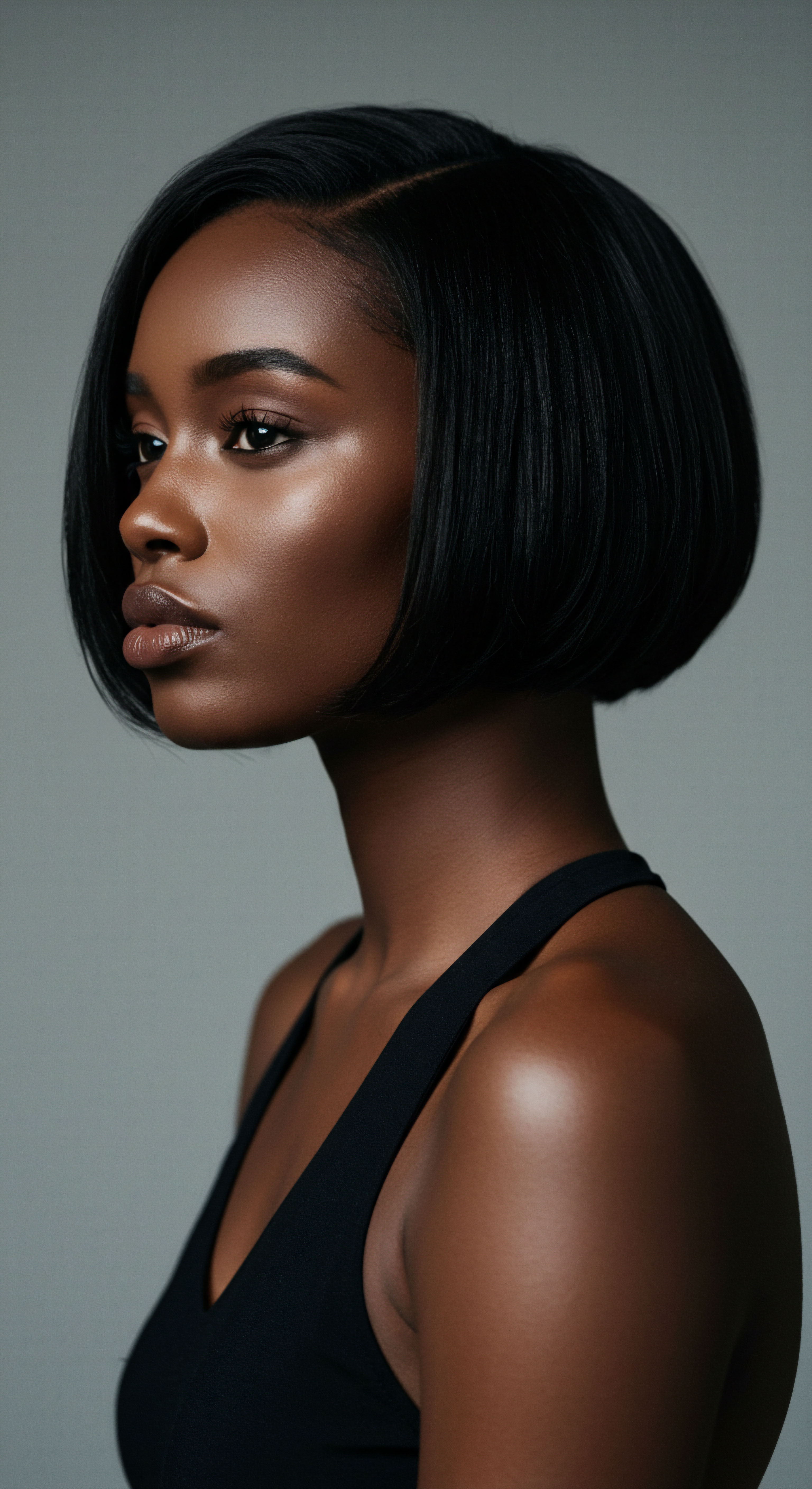
Did Wig Styles Dictate Hair Care Practices?
The relationship between wigs and natural hair might also have been reciprocal. The popularity of wigs, especially among the elite, could have influenced daily hair care routines. Shaving the head, as a hygiene practice, would have made wearing wigs more comfortable and practical.
Furthermore, the desire to maintain a consistent appearance, even when not wearing a wig, might have led to styling practices that attempted to mimic the smooth, structured look of the wigs on natural hair. This could involve applying fats, oils, or even rudimentary forms of heat to achieve a straightened or smoothed effect, albeit temporarily.
The social and ritual context of ancient Egyptian life meant that appearance was never arbitrary. The wig was not merely an accessory; it was an integral part of an individual’s presentation, often symbolic of their connection to divine order and their aspirations for the afterlife. Renate Germer’s work on mummies and funerary practices highlights the meticulous attention paid to the deceased’s appearance, including their hair and wigs, as part of the preparations for eternal existence. This underscores that the choice to alter or reflect hair texture in wigs was a deeply considered one, serving complex cultural and spiritual purposes beyond simple fashion.

Reflection
As we gently close our exploration into the ancient Egyptian relationship with hair and wigs, a subtle understanding settles upon us. The artistry of these timeless people, so deeply connected to the rhythm of the Nile and the promise of eternity, extended its delicate touch to every aspect of their being, including their crowning glory. We find that their approach to hair, particularly in the construction of wigs, was not a mere replication of what nature offered. Instead, it was a considered act of creation, a purposeful shaping that spoke volumes about their ideals, their social fabric, and their enduring quest for order and beauty.
The wigs, with their structured waves and meticulous braids, stand as quiet testaments to a civilization that understood the power of presentation, a society that chose to sculpt its appearance not just from what was, but from what could be. The echoes of their practices remind us that hair, across all ages and cultures, remains a deeply personal and powerfully symbolic canvas.

References
- Fletcher, Joann. Ancient Egyptian Hair and Hairdressing. British Museum Press, 2016.
- Germer, Renate. Mummies ❉ Life After Death in Ancient Egypt. Prestel, 1997.
- Lucas, A. Ancient Egyptian Materials and Industries. 4th ed. revised by J.R. Harris. Edward Arnold, 1962.
- Robins, Gay. Women in Ancient Egypt. Harvard University Press, 1993.
- Rzepka, J. & Szpakowska, A. (Eds.). Hair in Ancient Egypt ❉ A Sourcebook. Lockwood Press, 2023.
- Koller, H. “The Hair of the Ancient Egyptians.” Journal of Egyptian Archaeology, vol. 55, 1969, pp. 12-16.
- Bianchi, Robert S. “The Hair of the Pharaohs.” KMT ❉ A Modern Journal of Ancient Egypt, vol. 1, no. 4, 1990, pp. 41-47.
- Parsons, Marie. “Hair in Ancient Egypt.” KMT ❉ A Modern Journal of Ancient Egypt, vol. 14, no. 1, 2003, pp. 58-67.
- Tassie, Geoffrey J. “The Social and Ritual Contextualisation of Ancient Egyptian Hair and Hairstyles from the Protodynastic to the End of the Old Kingdom.” PhD diss. University College London, 2009.